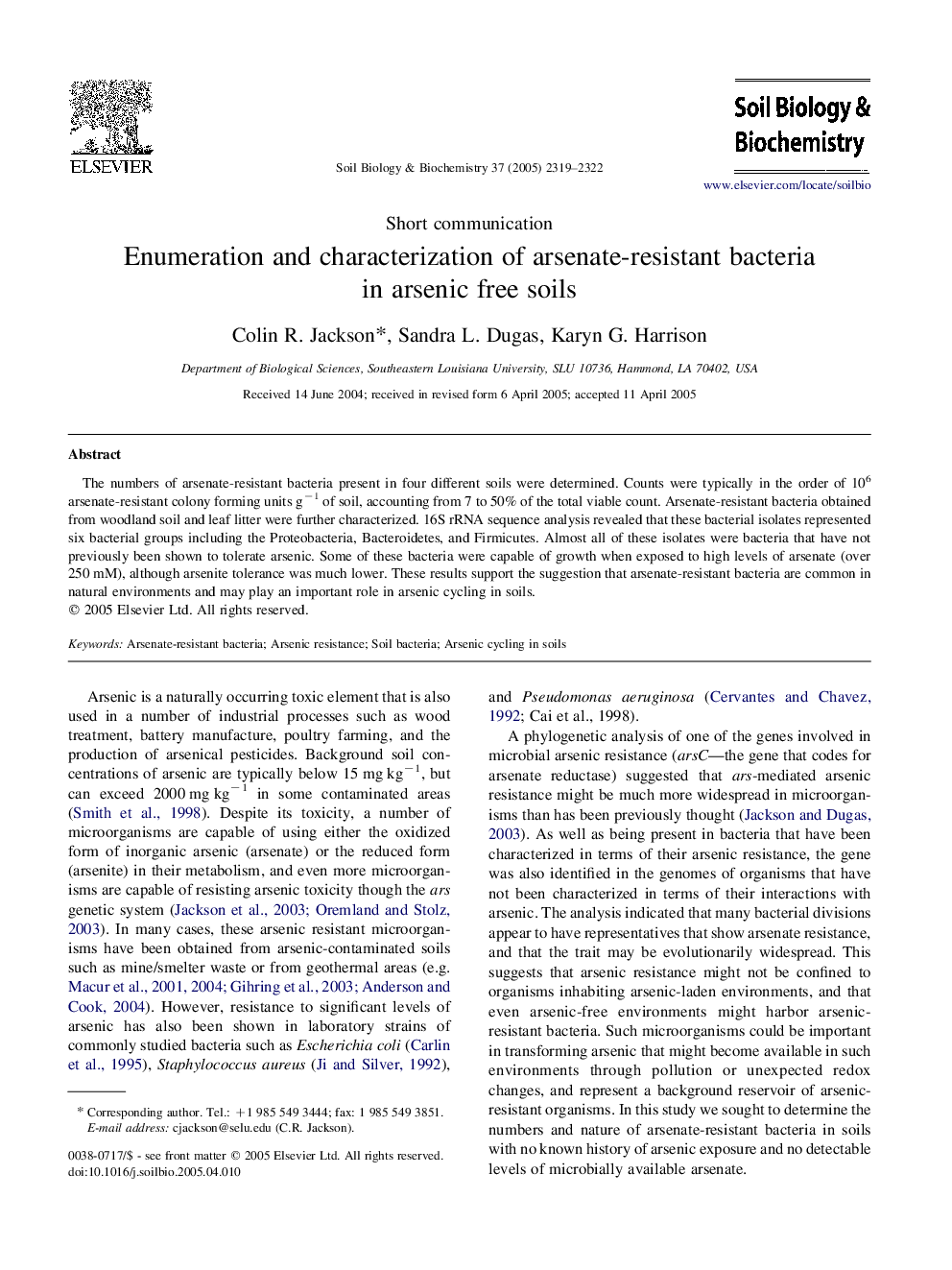| Article ID | Journal | Published Year | Pages | File Type |
|---|---|---|---|---|
| 2026515 | Soil Biology and Biochemistry | 2005 | 4 Pages |
Abstract
The numbers of arsenate-resistant bacteria present in four different soils were determined. Counts were typically in the order of 106 arsenate-resistant colony forming units gâ1 of soil, accounting from 7 to 50% of the total viable count. Arsenate-resistant bacteria obtained from woodland soil and leaf litter were further characterized. 16S rRNA sequence analysis revealed that these bacterial isolates represented six bacterial groups including the Proteobacteria, Bacteroidetes, and Firmicutes. Almost all of these isolates were bacteria that have not previously been shown to tolerate arsenic. Some of these bacteria were capable of growth when exposed to high levels of arsenate (over 250Â mM), although arsenite tolerance was much lower. These results support the suggestion that arsenate-resistant bacteria are common in natural environments and may play an important role in arsenic cycling in soils.
Keywords
Related Topics
Life Sciences
Agricultural and Biological Sciences
Soil Science
Authors
Colin R. Jackson, Sandra L. Dugas, Karyn G. Harrison,
